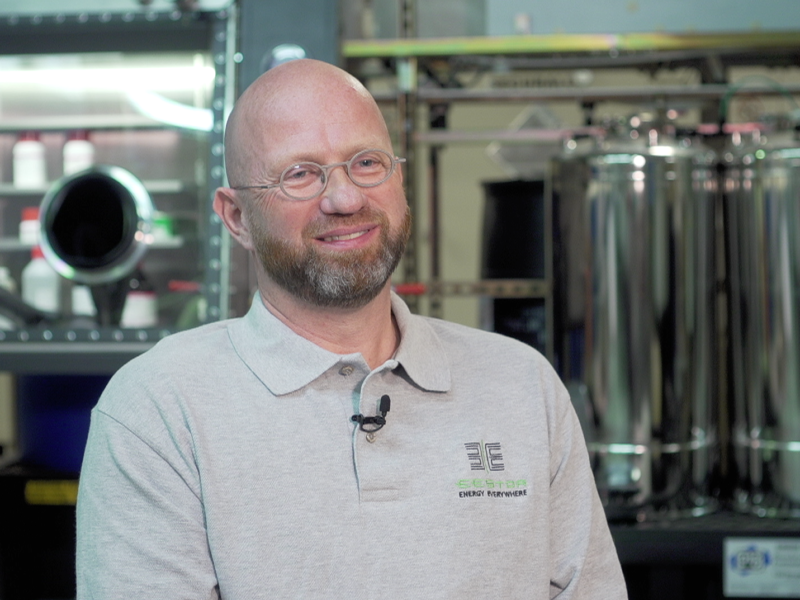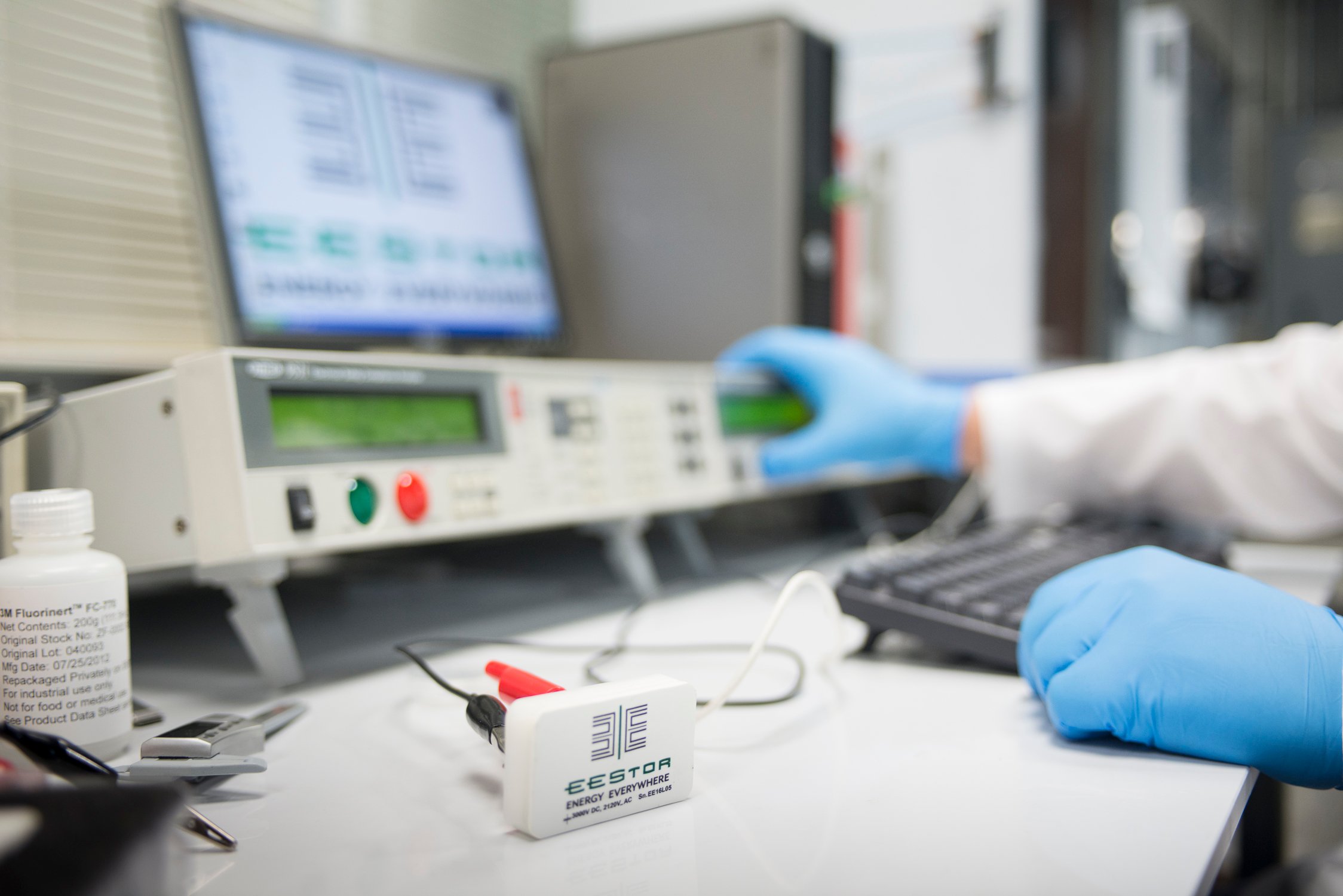
Solid state polymer readies for the big time
The original technology being developed by EEStor in Cedar Park, Texas, dates back to the 1990s and has had a somewhat turbulent past. “The original scientists started working on solid state energy storage – they had been working on the Star Wars initiative where the systems were working but failing because of the battery storage,” said Ian Clifford, president and CEO of EEStor (above). “So they looked at materials that had performance characteristics that were not being seen in solutions that were used in batteries.”
That led to EEStor’s ceramic technology based on a Composition Modified Barium Titanate (CMBT) material that can make capacitors and supercapacitors that handle higher voltages in smaller packages.
In 2006 EEStor was ready to start the commercial aspects with pilot production and did a deal with a Canadian electric car startup. “I had started an electric car company at the time, ZENN Motors, so I was very interested in the promise of the technology. Following ZENN’s initial commitment to EEStor, [Venture Capital firm] Kleiner Perkins became involved and their investment required production capability with a real focus on commercialising the technology.
“ZENN [Zero Emission, No Noise] sold around 1000 vehicles in the US, and it been proven that the reason we don’t all drive electric cars is because the batteries suck, so we had to make a choice between developing low speed electric vehicles or energy storage which we did in 2012 and collapsed the companies into each other to focus on the technology,” he said, creating today’s eestor.
“We’ve got to fix energy storage globally, its an imperative and it’s a good opportunity for us,” he said.
Clifford recognised early on that testing was essential for the credibility of the material, especially for a licensing business. One of the challenges is that the CMBT can be added to a range of other materials with differing performance.
“Early on we started working with Intertek on test who have a lot of experience with capacitor type devices and we are now completing our phase 9 testing with them, expanding it to include two other organisations that specialise in high voltage capacitors to make sure we have a credible, repeatable process for the data,” said Clifford.
“A battery is still out of our reach but in the meantime we have a product that stores more energy than other materials.,” said Bryan Kelly, vice president of production at eestor. “CMBT mixed with glass can maintain a higher dielectric constant at voltage than other dielectrics. The Phase 7 material showed the nature of the material, a lead free relaxer with low residual polarisation, which is unique and means you get more energy out in discharge.”
Next: Tackling the MLCC shortages
Adding the glass changes the thermal response of the capacitor, allows a higher voltage and lowers the sintering temp so instead of precious electrodes capacitor makers can use base metal electrodes. This allows the MLCCs to be significantly smaller than aluminium electrolytic capacitors and lower cost, says Kelly, especially important at a time when MLCCs are increasingly in short supply.

The company now has several products lines, with a glass CMBT hybrid for MLCC and a pure CMBT Y5V for MLCCs in the decoupling capacitor market, as well as a version for supercapacitors.
“With the CMBT loaded polymers at room temperature we are approaching energy densities of supercapacitors. We are completely electrostatic with high voltage so we have 3K and 4kV parts with an energy density that’s suitable for the low end of the supercapacitor market,” said Kelly. “On the ceramic side we can store 1.4wh/l and we are not going to wear out over time,” he said.
“From our perspective the development is all concurrent, the advancements we are making on the polymer side are daily and dramatic, so we are very excited about those material developments,” said Clifford.
The technology is now rolling out to manufacturers.
“We are talking right now to a range of international manufacturers on how we can enhance their MLCC output with a higher K dielectric, and by increasing the performance of materials in existing devices you can increase throughput to address the shortage of MLCC devices,” said Clifford. Others are looking at it for replacement of aluminium electrolytic capacitors.”
“Our intention is not to produce end devices but production of the CMBT, either through licensing or joint ventures. We are negotiating with tier 1 multibillion dollar organisations, the top 3 players, so we are getting interest at that level. Capacitor part manufacturing is happening in Europe and companies are definitely interested in the high voltage operation,” he added. “The raw material and CMBT production can happen anywhere in the world, there are supplies of barium titanate and dopants are available around the world.”
With the history of the technology, having proof points is essential, says Clifford.
“We wanted to push the technology as far as we could and get independent certification of the technology and turn heads,” he said. “You kind of only get one chance and we wanted to put our best foot forward, and its very important to be ready. We’ll publish the Phase 9 results in the next couple of weeks with a lot of focus on that.”
 If you enjoyed this article, you will like the following ones: don't miss them by subscribing to :
eeNews on Google News
If you enjoyed this article, you will like the following ones: don't miss them by subscribing to :
eeNews on Google News




